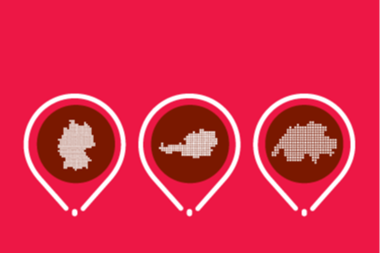Europe’s pension funds are still reluctant to talk about their strategies in terms of alpha and beta. But there is still a need for pension funds and other large investors to gather all the outperformance that they can.
The terms ‘alpha’ and ‘beta’ are used to name two investment management concepts which work best when used together. Beta is generally used for the tendency of an investment to move with the market. It has become a synonym for market movement or exposure. This contrasts with alpha, which entails generating returns by beating the market.
Mn Services Investment Management, which manages assets for eight pension fund clients in the Netherlands, approaches alpha investing primarily from the point of view of diversification. This is also the case with other pension funds in Europe; the diversification angle is seen as more important than the potential for increased returns, which are, of course, only potential.
However, Mn Services says the story does not begin with alpha, but with beta. Jan Bertus Molenkamp, director account management at Mn Services Investment Management explains that it therefore carries out ALM studies for its pension fund clients on the principle that all eggs should not be carried in one basket; the investment team tries to diversify as much as possible.
Diversification out of equities is important, he says, and Mn Services uses non-mainstream instruments, such as high yield bonds, emerging market debt, private equity, commodities and hedge funds within overall investment strategies.
Many different types of instrument are used “to take care that whatever happens in the future, we have a sound basis to generate returns versus a good risk profile”, Molenkamp says.
In the current market environment of low interest rates and low returns on beta investments, pension funds are looking for extra returns. Molenkamp says that in the search for those additional returns, the starting point is the (active) risk budget.
“We work from the concept of the risk budget,” he says. “Then we look to see where we will spend that risk budget to generate extra returns (alpha).” There may not be much extra return to be generated with US large caps, for example, whereas the prospects among emerging market equities or with high yield bonds may be more promising.
“We believe managers are able to capture alpha in a consistent manner in these market segments,” he says.
Global Tactical Asset Allocation (GTAA) is another method of adding alpha that Mn Services favours. “GTAA is more important in this environment,” Molenkamp says. “Although GTAA could be derived from a bet on betas, it is an alpha generator. That’s also where we are allocating a significant amount of active risk.”
Until two years ago, most investors were betting on the beta with the large equity share in their portfolio, says Molenkamp. After the decline in equity prices, and taking into account the low interest rate environment, a shift began which saw investors putting increasing amounts into alpha rather than beta.
In a sense, putting money where the markets are most inefficient is quite a traditional way to invest. It is here that managers are in a position to outperform. “The challenge is then, how do you find the managers who will be successful in this,” he says.
In Ireland, the National Pensions Reserve Fund (NPRF), having started out in 2001 with a bold 80/20 equities to bonds split, has since begun diversifying into alternative asset classes. A major attraction of, and reason for, the new additions to the set of asset classes already contained in the E11bn fund, is the potential for providing uncorrelated sources of alpha, but the fund has no absolute return mandates.
A decision was taken not to invest in hedge funds because of the lack of regulation in the investment sector.
“It was always realised that we would diversify away (from quoted equity and bonds) and into private equity,” says Adrian O’Donovan at the National Treasury Management Agency (NTMA) which runs the NPRF. “In dividing up the mandates, the committee decided it would try to add value over and above the market, with half and half passive/equity mandates.”
Starting in 2002, the NTMA started looking for other asset classes, and added a corporate bond mandate. “The whole thing was constrained within a risk budget, with a maximum tracking error of 1.25%,” he says. “As part of this, we started moving beyond equities and bonds, taking into account our long-term investment horizon.”
The objective of the NPRF is to meet as much as possible of the costs of social welfare and public service pensions from 2025 until at least 2055. The Irish government invests 1% of GNP each year, and no money can be taken from the fund before 2025.
The fund says that this long-term investment horizon and the lack of any liquidity requirement for the next 20 years, as well as its strong cash flow from the annual exchequer contribution, were key factors in both the initial 2001 investment strategy and in this 2004 diversification.
In its annual report, the fund says : “They allow the fund to exploit both the short-term volatility and lack of liquidity inherent in some of its chosen asset classes in anticipation of the excess return available to long-term investors as compensation for these factors.”
At the end of 2009, the fund targets a strategic asset allocation of 69% in quoted equity, 13% in bonds and 18% in alterative assets. Within alternative assets, 8% will be property, 8% private equity and 2% commodities.
The fund gives clear reasons why it expects its alternative asset classes to generate extra returns. Private equity, it says, can generate significant additional return due to investor compensation for the longer investment horizons, lack of liquidity and the relatively greater risk of investment in unquoted
companies.
Property has both equity and bond characteristics – with long-term valuations likely to increase ahead of inflation, coupled with rental income. “The potential return from property investment can be enhanced through the use of leveraged investment structures,” it adds.
Commodities offer attractive return prospects, the reserve fund says. It cites the example of forestry, which can be an attractive investment for pension funds as mature trees can be left in place during economic downturns and harvested when business improves.
The fund says it will access the property market indirectly through property investment vehicles rather than though buying and holding land and building. Using this approach will, it says, give significant diversification in a reasonable timescale. As well as this, the property fund route will give the reserve fund the opportunity to “exploit leveraged structures in order to enhance return”.


























No comments yet